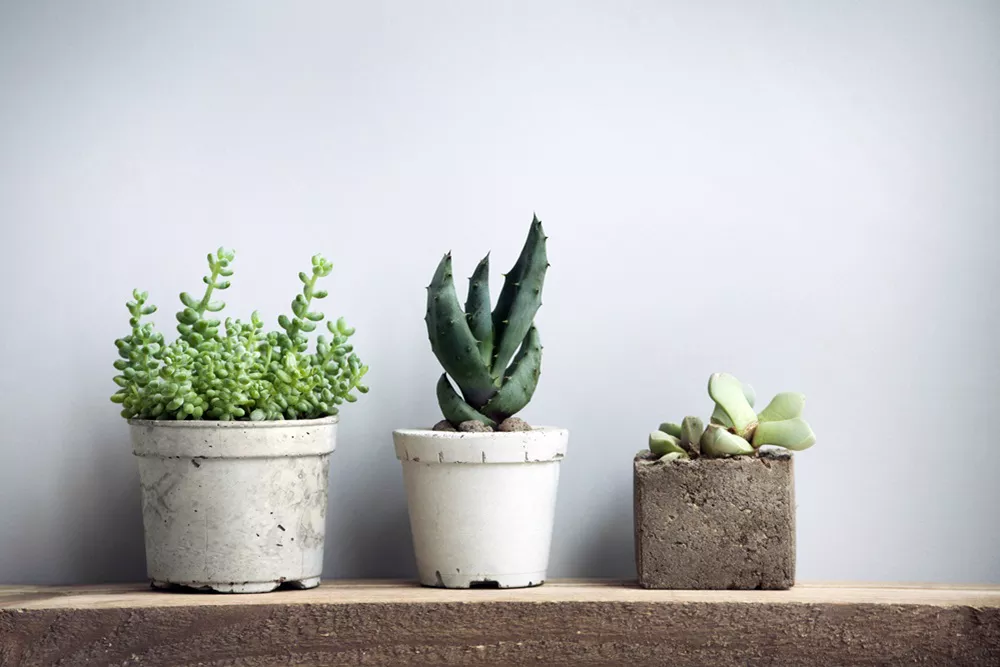Jade succulents, scientifically known as Crassula ovata or commonly referred to as “jade plants” or “money plants,” are cherished for their unique appearance and resilience. These stunning succulents are popular as indoor and outdoor ornamental plants, and their lush green leaves are thought to bring good luck and prosperity. To help you maintain the health and beauty of your jade succulent, we present this comprehensive guide on how to care for these remarkable plants.
Understanding Jade Succulents
Before delving into the specifics of jade succulent care, it’s important to understand the unique characteristics of these plants:
Origin: Jade succulents are native to South Africa and Mozambique, thriving in arid regions.
Appearance: They feature thick, fleshy leaves that are oval or oblong-shaped. The leaves are typically glossy and can range from deep green to bluish-green, with red-tinged edges.
Growth Habit: Jade plants can grow as small, shrub-like specimens or as tall, tree-like varieties with woody stems.
Symbolism: In many cultures, jade succulents symbolize prosperity, good fortune, and wealth, making them popular choices for gifts and decorative plants.
Essential Care Guidelines for Jade Succulents
1. Light Requirements
Bright, Indirect Light: Jade succulents thrive in bright, indirect light. Place your plant near a sunny window where it can receive plenty of filtered sunlight throughout the day. Avoid placing it in direct sunlight for extended periods, as this can lead to sunburn.
Rotate Your Plant: To ensure even growth, rotate your jade succulent every few weeks so that all sides receive adequate light.
2. Watering Practices
Allow the Soil to Dry: Jade succulents are drought-tolerant and prefer to dry out between watering. Water your plant thoroughly when the top inch of the soil feels dry to the touch. Ensure that the pot has proper drainage to prevent waterlogged roots, which can lead to rot.
Use the Soak-and-Dry Method: Water your jade succulent deeply, allowing the water to saturate the root zone. Ensure that excess water drains out of the pot. Discard any standing water in the saucer beneath the pot.
Adjust Watering Frequency: The frequency of watering depends on environmental factors such as humidity, temperature, and the size of your pot. During the growing season (spring and summer), you may need to water more frequently, while in the dormant season (fall and winter), reduce watering.
3. Soil and Potting Mix
Well-Draining Soil: Jade succulents require well-draining soil to prevent root rot. Use a commercial cactus or succulent potting mix or create your own mix by adding perlite or sand to regular potting soil.
Choose the Right Pot: Select a pot with drainage holes to ensure excess water can escape. A pot that is slightly larger than the root ball of your jade plant is ideal, as it prevents overwatering.
4. Temperature and Humidity
Ideal Temperature Range: Jade succulents thrive in average room temperatures between 65°F to 75°F (18°C to 24°C). They can tolerate cooler temperatures but should be protected from frost.
Low Humidity Tolerance: These succulents are well-suited for indoor environments with lower humidity levels. However, they benefit from occasional misting to increase humidity slightly.
5. Fertilization
Minimal Fertilization: Jade succulents have relatively low nutrient requirements. Fertilize sparingly during the growing season (spring and summer) with a balanced, diluted, liquid succulent fertilizer. Avoid excessive fertilization, as it can lead to salt buildup in the soil.
Fertilize Sparingly: Feed your jade succulent once every 2-3 months during the growing season, diluting the recommended fertilizer strength by half.
6. Pruning and Maintenance
Prune for Shape: Jade succulents can become leggy over time. Prune back leggy growth to encourage a bushier appearance. Use clean, sharp scissors or pruning shears to make clean cuts.
Remove Dead or Yellowing Leaves: Regularly inspect your plant for dead or yellowing leaves and remove them to promote healthy growth.
Repotting: Repot your jade succulent every 2-3 years or when it outgrows its pot. Choose a slightly larger pot with good drainage and refresh the soil mix during repotting.
Common Issues and Solutions
1. Overwatering: Jade succulents are prone to root rot if overwatered. To remedy this, allow the soil to dry completely before watering and ensure that the pot has drainage holes.
2. Underwatering: While drought-tolerant, these succulents still require regular watering. Signs of underwatering include wrinkled, shriveled leaves. Increase your watering frequency if you notice these symptoms.
3. Pests: Jade plants can occasionally attract common succulent pests like mealybugs and spider mites. Inspect your plant regularly and treat infestations promptly with insecticidal soap or neem oil.
4. Leaf Drop: Excessive leaf drop can occur due to stress, overwatering, or sudden changes in lighting conditions. Address the underlying issue and provide stable care to prevent further leaf drop.
Conclusion
Caring for jade succulent plants can be a rewarding and straightforward experience with the right knowledge and attention to detail. These resilient plants can thrive in various environments, making them suitable for both beginners and experienced gardeners. By following the guidelines outlined in this comprehensive guide, you can ensure that your jade succulent remains healthy, vibrant, and a symbol of good fortune in your home or garden. Remember that each plant is unique, so closely monitor your jade succulent’s needs and adjust care as required to promote optimal growth and longevity.


